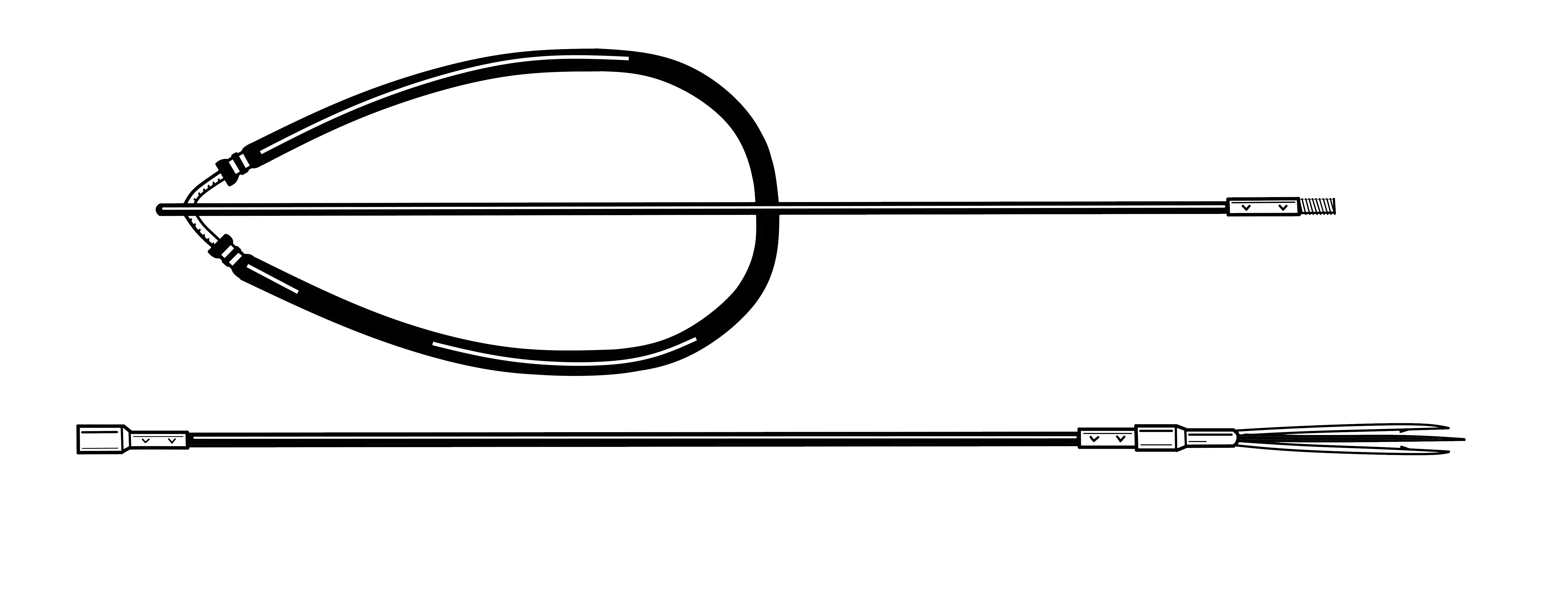Using equipment in marine waters
Labelling your gear correctly
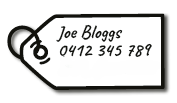
Hoop nets and bait traps must be attached to a tag that remains above the water’s surface with the recreational fisher’s full name and telephone number clearly and legibly written.
Lines, hooks and jigs
Lines
You must not leave a line or rod unattended. Your line must be in sight and within 50m of you.
Hooks and jigs
One hook is defined as:
- a single hook
- a group of 4 hooks linked together by the eye
- a lure
- a squid jig
- a bait jig.
Keeper hook
A keeper hook:
- is defined as an assembly of 2 hooks arranged to keep bait in one position at the line
- has 1 hook attached to the end of the line and 1 hook that can slide down the line and touch the attached hook
Bait jig
A bait jig is:
- defined as a continuous series of no more than 6 unbaited lures with hooks less than 2 cm in length, attached to a line with a total rig length of up to 3 m.
In marine waters, each licenced or exempt fisher may use a maximum of 4 lines per person (with or without attached rods), with no more than 2 hooks or 1 bait jig attached to each line.
Baited lines
Baited lines are lines without hooks, Baited lines must not have any hooks tied to them.
A maximum of 10 baited lines (per licenced or exempt fisher) may be used and possessed in any marine water.
Bait pumps
Hand-operated suction bait pumps with a barrel diameter not exceeding 8.5cm may be used to extract burrowing shrimp (including bass yabbies), marine worms and other invertebrate species. A sieve can be used in conjunction with the pump.

A maximum of one bait pump (per licensed or exempt fisher) can be used in marine waters.
You must not use a bait pump as a tool to dig with.
Hoop nets
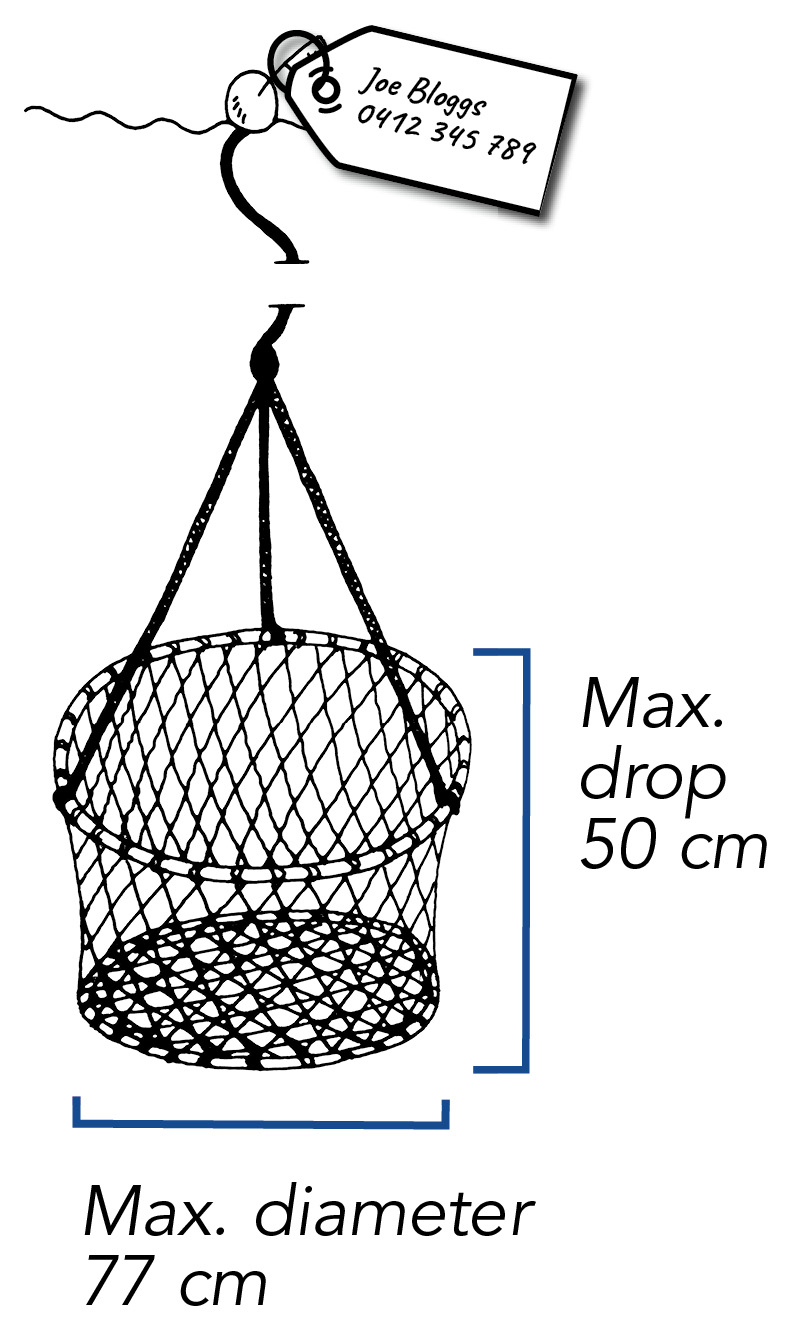
A hoop net is a cylindrical net open at the top, consisting of 1 or 2 hoops not exceeding 77cm in diameter. The net must not have a drop of more than 50cm. Nets must be labelled if set from a boat or left unattended. Hoop nets must be attached to a tag that remains above the water’s surface with the recreational fisher’s full name and telephone number clearly and legibly written.
A maximum of 2 labelled hoop nets (per licenced or exempt fisher) may be used or possessed in or on any marine water during the open season.
Closed season for hoop nets
Each year, from 15 September to 15 November (inclusive) you must not use a hoop net in any marine water other than Port Phillip Bay, Western Port, the Gippsland Lakes or any inlet of the sea.
Gaffs
Barbless gaffs
Barbless gaffs can be used to assist anglers to take or land fish (other than invertebrates). A barbless gaff can only be used in connection with a rod and line or handline.
Flying gaffs
A flying gaff consists of a single hook (with or without a barb) and a rope or cord attached to both the hook and a rigid pole, such that the hook detaches from the pole when it penetrates the body of a fish. This device can be used in connection with landing a fish controlled by a rod and line and is commonly used in game fishing.
Harpoons are not permitted.
Hand-cranked electric reels
These are permitted for use by recreational fishers if they have a hand cranking mechanism, are fitted to a conventional recreational fishing rod and can be hand held when retrieving fish. Other types of powered devices are considered commercial fishing equipment and cannot be used by recreational fishers. If a person with a disability has a legitimate need to use a powered device other than a hand-cranked electric reel, they may apply for a permit from the VFA.
Bait traps
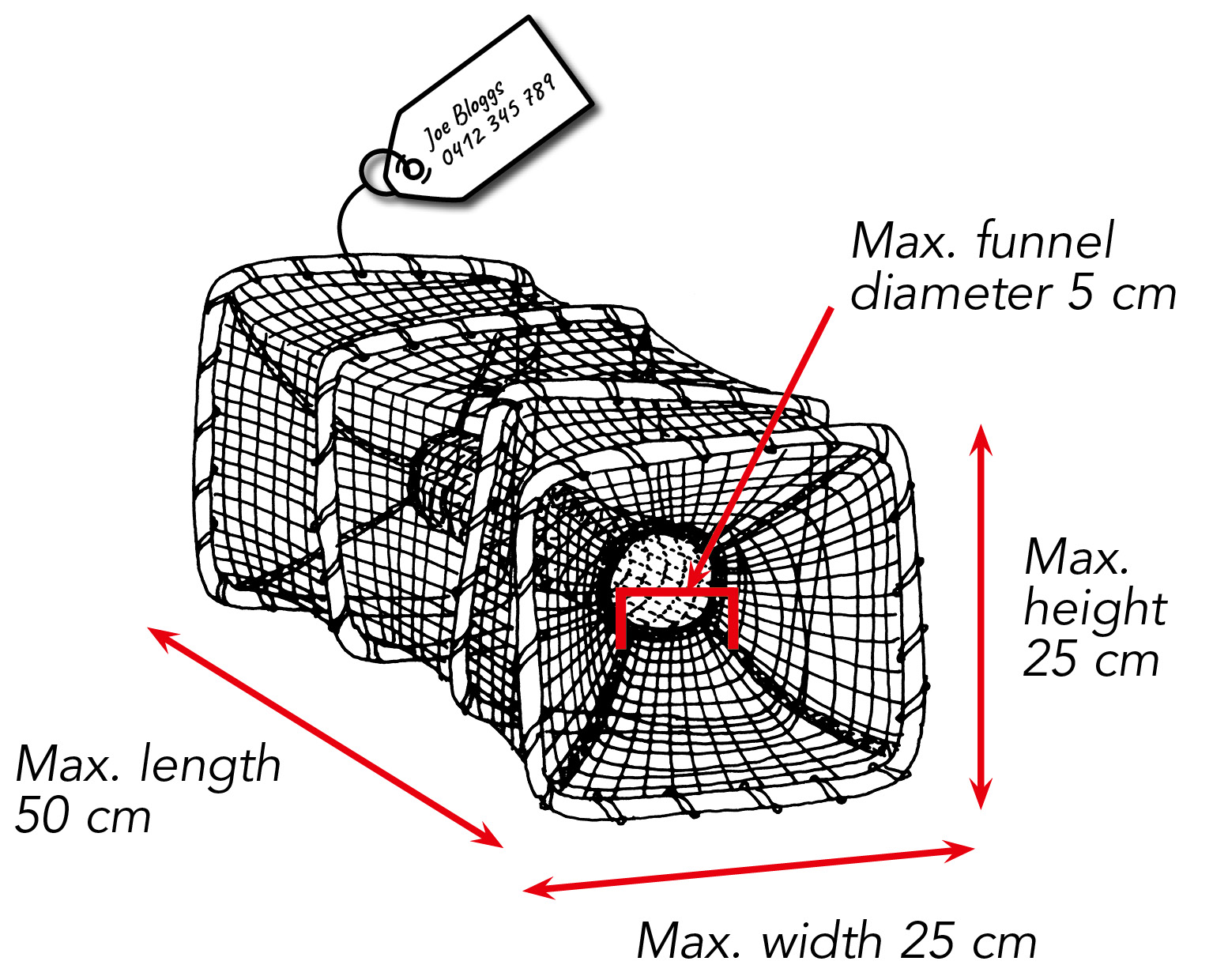
Funnel entrance diameter must not exceed 5cm. The height of the trap must be no more than 25cm. The size of the trap must be less than 25cm wide and 50cm long.
A maximum of 2 labelled bait traps (per licensed or exempt fisher) may be used in or on any marine water.
Bait nets (Hauling nets)
A bait net must not exceed 6m in length. Hauling ropes attached to each end also must not exceed 6m. Bait nets do not include cast nets, which are illegal equipment.
A licensed or exempt fisher can use a maximum of 1 bait net to collect bait from permitted marine waters. Bait nets must not be used in restricted waters.
Restricted waters
A bait net must not be used in:
- Port Phillip Bay and Western Port
- the North Arm and Cunninghame Arm of Gippsland Lakes
- the waters of the Toorloo Arm and Nowa Nowa Arm of Lake Tyers that flow upstream of the lines shown on the map below
- Tamboon Inlet
- Sydenham Inlet
You must not tow, drag or haul any net behind a motor under propulsion in any Victorian waters, marine or inland.
Permitted waters
A bait net is permitted to be in waters at least 30m from any jetty or pier and at least 400m from the mouth of any creek or river in the following waters:
- Gippsland Lakes (excluding those of the North Arm and the Cunningham Arm);
- Lake Tyers (excluding those of the Toorloo Arm and Nowa Nowa Arm listed above and shown on the map below);
- the Lower Lake of Mallacoota Inlet;
- Corner Inlet;
- Shallow Inlet;
- Anderson Inlet;
- any other marine waters that occur on the seaward side of the entrance of the mouth of any inlet or river.
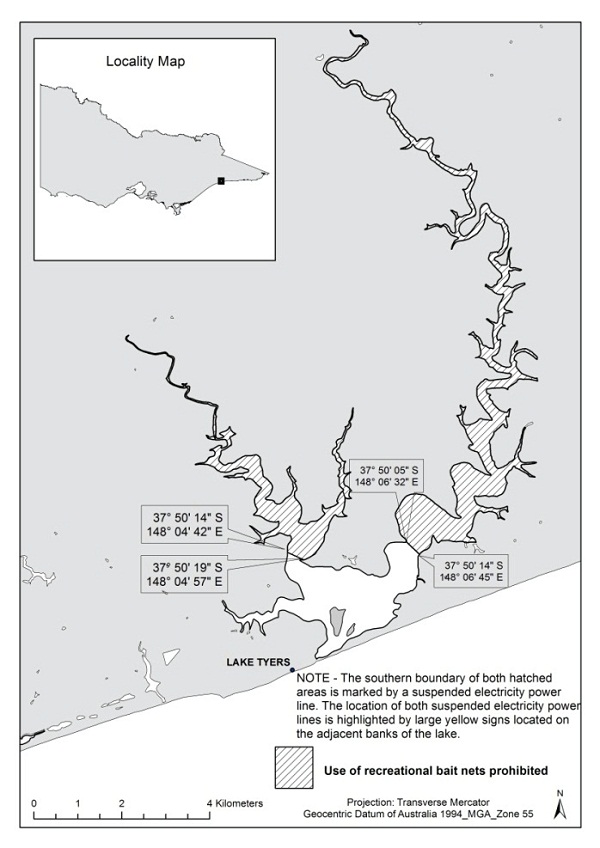
Dip/landing net
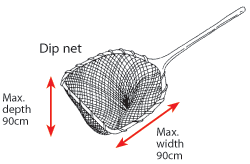
A dip net consists of an open-faced net with a width and depth not exceeding 90cm, attached to a handle.
A licensed or exempt fisher can use 1 dip net to take a variety of fish or invertebrate species, with or without a light.
Dip nets cannot be used to take any invertebrates from the intertidal zone in Port Phillip Bay or single-shelled molluscs from the intertidal zone of all other Victorian waters.
Spear fishing
Spear fishing is permitted in some marine waters only and is not permitted in a marine national park or marine sanctuary. The use or possession of a spear gun or a hand-held spear, in, on or next to any inland water is prohibited.
The use of any spear or spear gun to take rock lobster is prohibited.
Hand held spear

A hand-held spear means a spear with one or more prongs (with or without barbs). The spear is held in the hand and is designed so that the prongs do not detach from the spear when they penetrate the body of a fish.
It may be used to take fish (other than rock lobster and abalone) in marine waters.
The use or possession of a hand-held spear is prohibited:
- within 30 m of any jetty or pier
- within 30 m of the mouth of any creek or river (click here for more information on the definition of river and creek mouths)
- in a marine national park or marine sanctuary
- in or on inland waters including Curdies Inlet, Tamboon Inlet, Mallacoota Inlet, Swan Bay, Sydenham Inlet, Lake Tyers and Wingan Inlet
- in or on the waters of the North Arm of Gippsland Lakes
- in, on or next to the waters of Corner Inlet west of a line from the mean high water mark on the most northerly point of Entrance Point (on Wilsons Promontory) to the most westerly part of Little Snake Island at the mean high water mark then following the coastline of Little Snake Island generally north and then east to a point directly south of the long jetty at Port Welshpool and then on a north-south line to the end of that jetty and along the jetty to the shore.
Spear guns (including slings)
A spear gun is a mechanical device capable of imparting propulsive energy to a spear or arrow.
Each licensed or exempt fisher can use or possess a spear gun in, on or next to any marine water that is not a restricted water.
Restricted marine waters
The use or possession of a spear gun is prohibited:
- within 30 m of any jetty
- within 30 m of the mouth of any creek or river (click here for more information on the definition of river and creek mouths)
- in a marine national park or marine sanctuary
- in or on inland waters including Curdies Inlet, Tamboon Inlet, Upper Lake and rivers of Mallacoota Inlet
- in or on the waters of Anderson Inlet, Corner Inlet, Lake Tyers, the Lower Lake at Mallacoota Inlet, Shallow Inlet, Wingan Inlet and the Gippsland Lakes (see below)
- in or on the waters of Anderson Inlet, Corner Inlet, Lake Tyers, the Lower Lake at Mallacoota Inlet, Shallow Inlet, Wingan Inlet and in most of the Gippsland Lakes (see below).
The use or possession of a spear gun is only permitted in Gippsland Lakes in waters that are:
- within 20m of the 3 rocky groynes off the eastern end of Rigby Island
- within 20m of the 'barrier' in Hopetoun Channel located to the west of the barrier Landing
- within 50m of each of the compass beacons in Eagle Point Bay
- in between the imaginary lines running from Wattle Point to Trouser Point and from Waddy Point to Pelican Point in Lake Victoria (see map below).
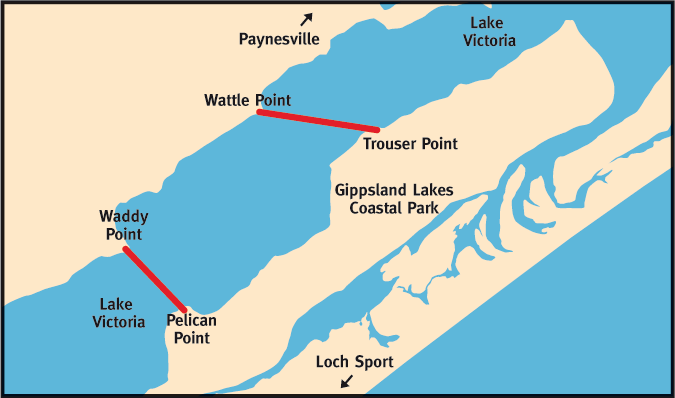
Hand-held spears and spear guns in prohibited waters
You may possess a spear gun or hand-held spear in a boat on prohibited waters only if you are proceeding by the most direct route to, or from, a boat ramp or mooring to waters in which the use of a spear gun or hand-held spear is permitted.

